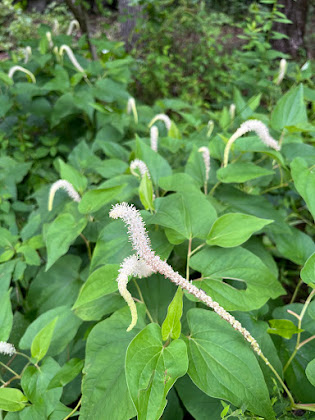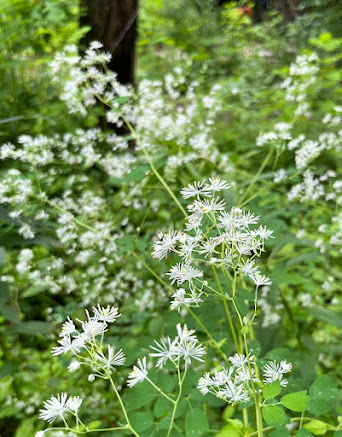If you haven't been to Autumn Hill Reservation in a while, this would be a good time to check it out. A three year revisioning of the trails to make them drier and more scenic is now essentially complete, and we're doing what could be called a "soft open" on the newest sections.
Signs give hikers a gentle nudge away from the old trails and towards the new.
This winter's revisions bypass wet areas and follow ridgelines and historic rockwalls that date back to when this land was farmed 100+ years ago.
Our wonderful mapmaker from Maine, Alison Carver, is already converting my scrawl and tracking files into a new map. The new configuration, with a new "blue" trail, should give hikers more options for exploring the preserve.
Thanks goes to Andrew and Ninfa for their help in clearing myriad invasive shrubs that were growing along the trail corridor. One of the satisfactions of trail creation is the habitat restoration that happens at the same time. Spared from our loppers were the many native spicebush, wild grape, and tree saplings growing along the routes.
With safety in mind, after the routes are cleared, our chainsaw virtuoso Victorino comes in with his assistant Wilbur and clears hazard trees, usually ash trees that were killed in recent years by the introduced emerald ash borer. Here, Victorino is checking to make sure the dead tree he is about to cut down will be able to fall cleanly to the ground. Note the clever ladder he cut from a tree branch so that he can reach the trunk to cut it.
Note also the Asian bittersweet vine climbing up the tree in the foreground. We cut as many of those as we can as part of the restoration work.
Occasionally I ask Victorino to sharpen the blade of my little electric chainsaw so that I can handle the small stuff.
Victorino also cuts some potential table tops from fallen ash trees that have interesting grain--tables that will tell the story of this forest in their tree rings.
A lot of thanks goes to those who support the Friends of Herrontown Woods with donations that make the work of Andrew, Ninfa, Victorino and Wilbur possible.
In other news from Autumn Hill, as of Feb. 28, there were still three big diabase boulders being held up to the sky by the rootball of this fallen tree. (I happened to be standing ten feet from this fine dental display when the first one fell, a couple years ago.)
But by March 6, only two remained. This drama has been playing out since the tree fell 5-10 years ago, lifting the root-tangled boulders up out of the ground. Don't you sometimes wish the pace of news in the world was more Autumn Hillian?


















































